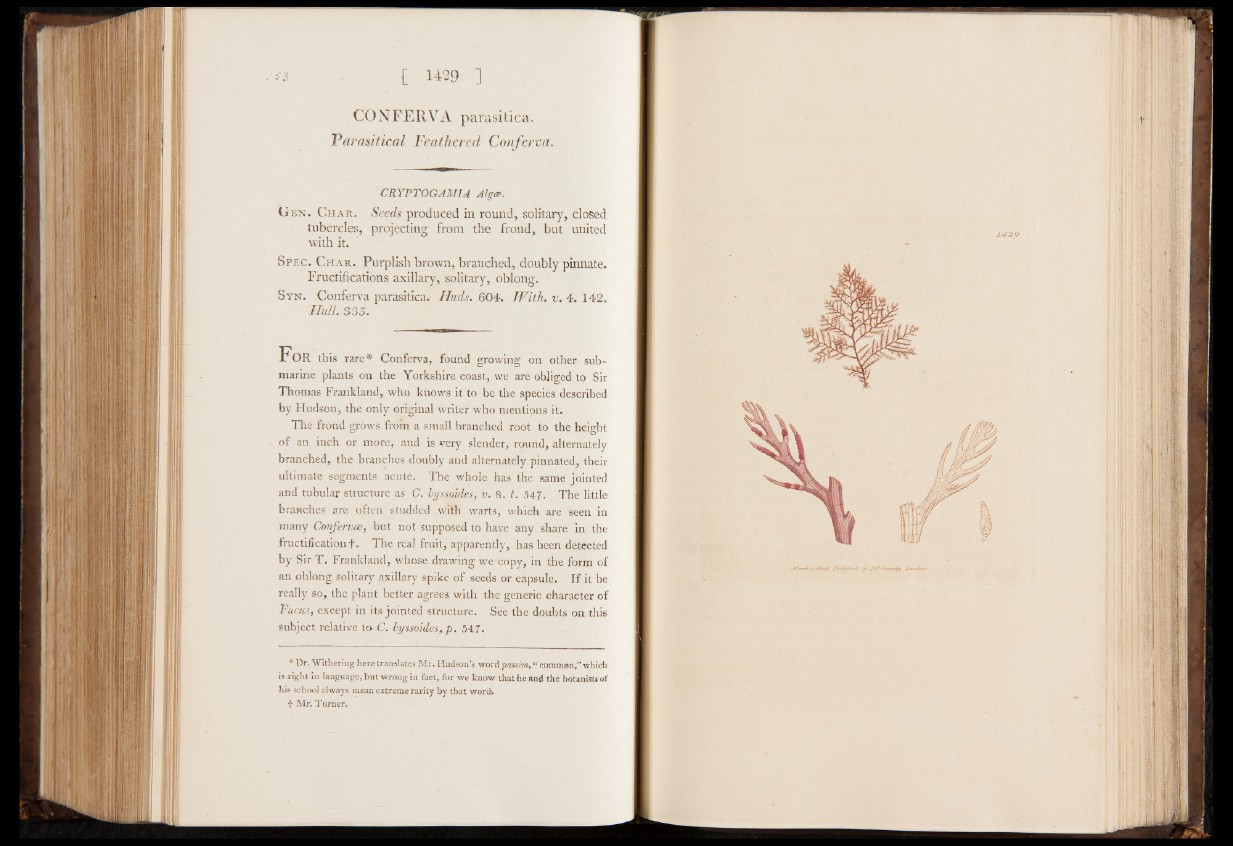
S'3 [ 1429 ]
CONFERVA parasitica.
Parasitical Feathered Conferva.
CRYPTOGAMIA Algce.
G en. Char. Seeds produced in round, solitary, closed
tubercles, projecting from the frond, but united
with it.
S pec . Char. Purplish brown, branched, doubly pinnate.
Fructifications axillary, solitary, oblong.
Syn. Conferva parasitica. Huds. 6 0 4 . With. v. 4 . 142.
Hull. 3 3 3 .
F o r this rare* Conferva, found growing on other submarine
plants on the Yorkshire coast, we are obliged to Sir
Thomas Frankland, who knows it to be the species described
by Hudson, the only original writer who mentions it.
The frond grows from a small branched root to the height
of an inch or more, and is very slender, round, alternately
branched, the branches doubly and alternately pinnated, their
ultimate segments acute. The whole has the same jointed
and tubular structure as C. lyssoides, v. 8. t. 547. The little
branches are often studded with warts, which are seen in
many Covfervce, but not supposed to have any share in the
fructification f . The real fruit, apparently, has been detected
by Sir T. Frankland, whose drawing we copy, in the form of
an oblong solitary axillary spike of seeds or capsule. If it be
really so, the plant better agrees with the generic character of
Fucus, except in its jointed structure. See the doubts on this
subject relative to C. liyssoides, p. 547.
* Dr. Withering here translates Mr. Hudson’s word passim, “ common,” which
is right in language, but wrong in fact, for we know that he and the botanists of
his school always mean extreme rarity by that word-.
f Mr. Turner.